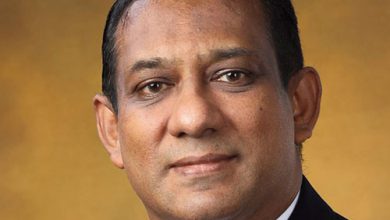TRAVEL SECTOR
Harith Perera
THE ROAD NOT TAKEN AS YET
Sri Lanka’s travel sector needs to decide which of two strategies to adopt

In your opinion, does the Sri Lankan smile remain a relevant value proposition?
Very much so! The hospitality and warmth of our people is appreciated by tourists visiting Sri Lanka. We have our own way of doing things; for instance, we acknowledge something by shaking our heads from side to side – it’s a rather confusing but unique gesture.
However, with changing times and higher levels of competition, we cannot rely on the Sri Lankan smile alone.
We need to improve our service levels, processes, value chain activities and more importantly. develop a long-term strategic plan. This would be a more practical approach towards sustainable growth as Sri Lanka is beginning to look too expensive in the eyes of tourists when compared to other regional players such as Thailand, Malaysia and Indonesia.
What sort of evolution have you observed among travellers in the last five years?
Social media has played a major role, influencing and changing the travel landscape. Almost anything is available at your fingertips and the thrill of experiencing a destination on the ground doesn’t really exist anymore.
Today, I can view any product or destination anywhere in the world on YouTube and other social media platforms before experiencing it firsthand. I’m able to read all the dos and don’ts before stepping into a place. So where is the thrill in that?
On the other hand, travellers are also more responsible now. They want to see what we do for the local communities with which we engage, how we handle scarce resources and invest in the sustainability aspect of operations. This is a step in the right direction. We will witness more tourism partners having sustainable plans, and working hand in glove with local communities and authorities.
Can you identify new customer segments in the market?
I see the emergence of young millennials travelling on their own, staying in guesthouses, experiencing local food and culture, using public transport and finding their way digitally – and at the end of it all, telling the whole world about their experience on social media.
In what ways does the emergence of budget travellers impact the travel sector?
This depends on how you position yourself and the strategy one adopts. Sri Lanka still hasn’t got it right. Whilst we target huge volumes such as 2.5 million tourist arrivals, our infrastructure, capacity and human resources can cater only to a smaller number of travellers.
So where do we go from here? Are we to target the budget traveller or should we make sure that Sri Lanka is a cut above the rest and target the luxury segment?
We need to decide which avenue to take, and have our entire marketing machinery targeting and servicing the chosen segment.
With Sri Lanka attracting more tourists every year, what sort of infrastructure developments are needed to facilitate growth in the hospitality sector?
It’s a huge task. Given the increasing number of tourists visiting each year, we encounter many challenges. Our talent pool is limited; we don’t have a large quantum of human resources entering the industry; and we find some of our talent being headhunted to work overseas for better pay and facilities.
I strongly believe that it’s high time our transport system was modernised. For instance, many tourists who visit Sri Lanka love to travel around the island by train because the experience is fascinating.
But our railway system is ancient and our ticketing process is a nightmare. Domestic air travel is very costly and Western tourists find our roads scary. So we have a long way to go.
What is your mantra for success?
Be honest and loyal in your job. Give your best to shareholders, colleagues and employees at all levels. And be appreciative of the organisation and what it has given you, not the other way round.
Describe yourself in one word…
I couldn’t come up with one so I asked my family – and they said ‘pandithaya’ (know-it-all).





